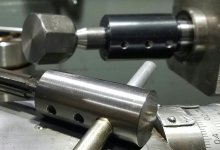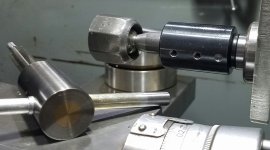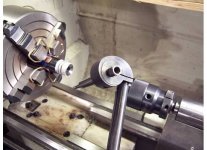Guys,
I currently pre-bore my chambers and get good results with a pusher but I dont like the fact I have to control torque with my hand, I also dont very much want to rest my handle on something solid, I would like to pre-bore as usual but then use either a tailstock or cross slide mounted floating reamer. I see holders like the Manson one but have read about them sagging etc so I really dont mind investing in something of higher quality that can control both radial and axial misalignment, maybe even with the option to be adjustable with regard to how much control is put on the reamer.
Can you guys tell me what the quality products are out there and any experiences of using them.
Many thanks.
I currently pre-bore my chambers and get good results with a pusher but I dont like the fact I have to control torque with my hand, I also dont very much want to rest my handle on something solid, I would like to pre-bore as usual but then use either a tailstock or cross slide mounted floating reamer. I see holders like the Manson one but have read about them sagging etc so I really dont mind investing in something of higher quality that can control both radial and axial misalignment, maybe even with the option to be adjustable with regard to how much control is put on the reamer.
Can you guys tell me what the quality products are out there and any experiences of using them.
Many thanks.










